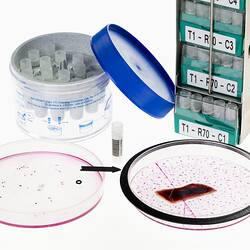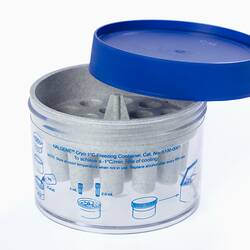These are a few of the tools used in the Ian Potter Australian Wildlife Biobank, where tissue samples - and even live cells - are stored long-term in liquid nitrogen for genetic research.
Skin samples are taken from a live animal and placed in a petri dish containing a cell growing medium. When kept in carefully-controlled conditions, the living cells multiply, and can be frozen for later use in the centuries to come.
This preserves the genetic material from that individual animal, which contributes to a databank of the genetic diversity of the species overall. This can potentially be used to combat species decline and restore genetic diversity to wild populations in the future.
More Information
-
Keywords
-
Authors
-
Article types





